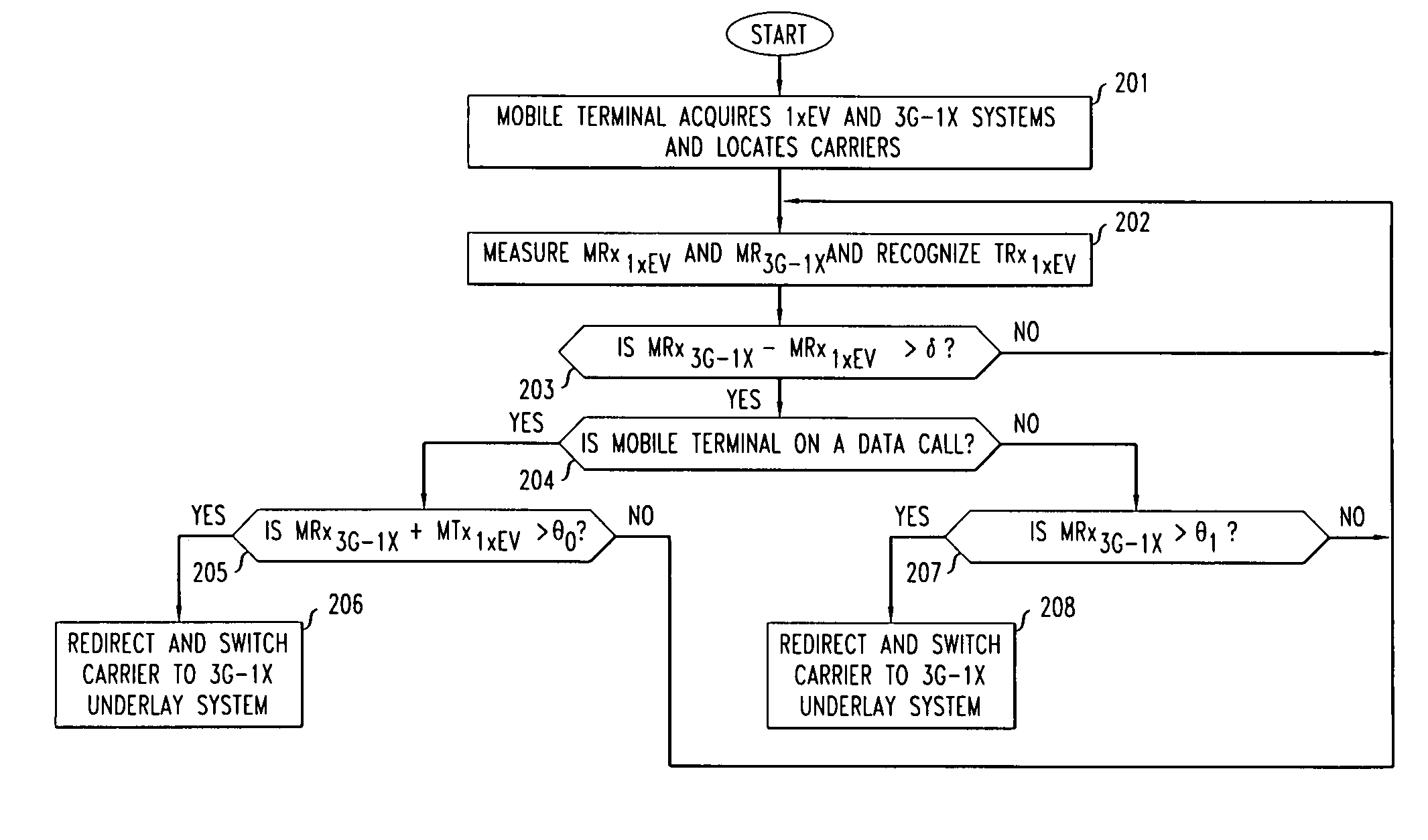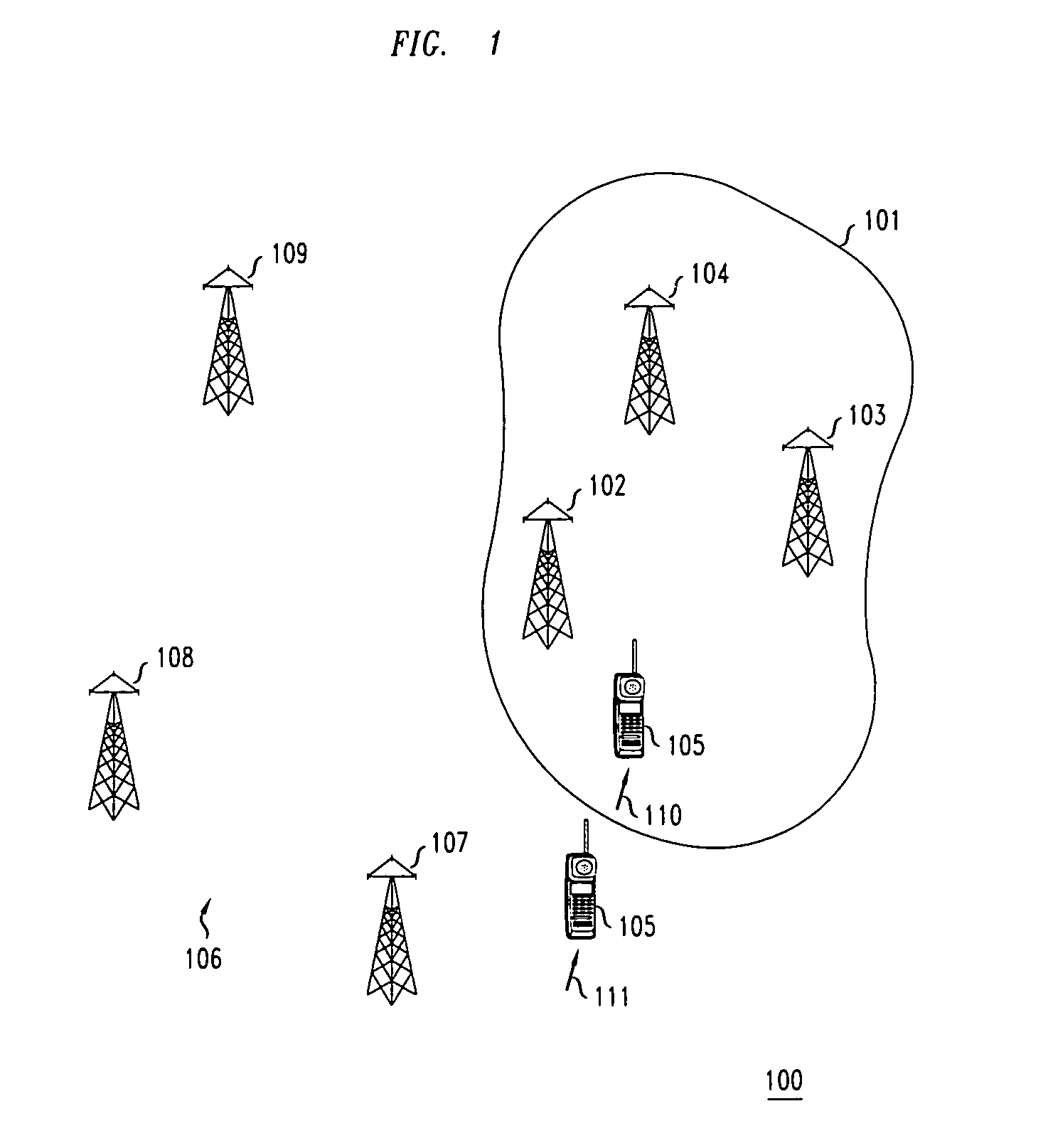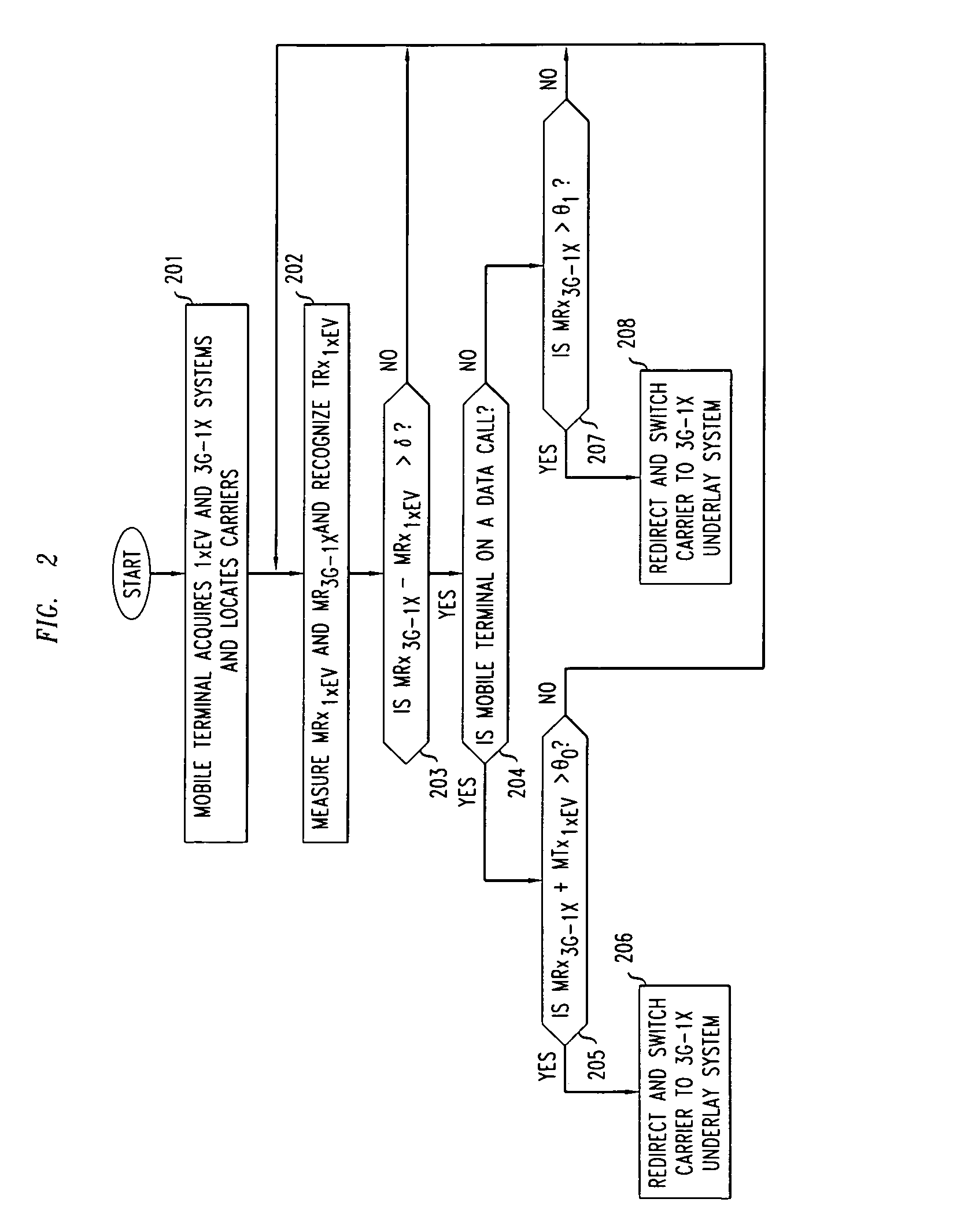Method of handoff at the border between CDMA underlay and overlay systems
a technology of overlay system and cdma, applied in the field of mobile communications, can solve the problems of affecting the reverse link of the adjacent carrier of the base station, the power of the uplink signal transmitted by the mobile terminal may be sufficiently large to interfere with the adjacent carrier's uplink signal, and the underlay base station to drop all ongoing calls
- Summary
- Abstract
- Description
- Claims
- Application Information
AI Technical Summary
Benefits of technology
Problems solved by technology
Method used
Image
Examples
Embodiment Construction
[0012]With reference to FIG. 1, a plurality of base stations are located within an overlay area 101 of a mobile service provider's area 100 consisting of the overlay area 101 and an underlay area 106. Although, for illustrative purposes, only three base stations 102, 103 and 104, are shown within overlay area 101, it should understood that a larger plurality of base stations would provide coverage to mobile subscribers within this area. In a described embodiment, the overlay area offers 1xEV high-speed data service to a user of a hybrid mobile terminal 105 that also functions as a 3G-1X mobile terminal. When operating in the latter mode, mobile terminal 105 provides voice and lower speed data service. Such a hybrid 1xEV / 3G-1X terminal 105 is capable of originating and receiving high-speed data calls through the base stations 102–104 when it is within the overlay area 101. Also, when it is within the overlay area 101, the hybrid mobile terminal 105, operating in its 3G-1X mode, is ca...
PUM
 Login to View More
Login to View More Abstract
Description
Claims
Application Information
 Login to View More
Login to View More - R&D
- Intellectual Property
- Life Sciences
- Materials
- Tech Scout
- Unparalleled Data Quality
- Higher Quality Content
- 60% Fewer Hallucinations
Browse by: Latest US Patents, China's latest patents, Technical Efficacy Thesaurus, Application Domain, Technology Topic, Popular Technical Reports.
© 2025 PatSnap. All rights reserved.Legal|Privacy policy|Modern Slavery Act Transparency Statement|Sitemap|About US| Contact US: help@patsnap.com



